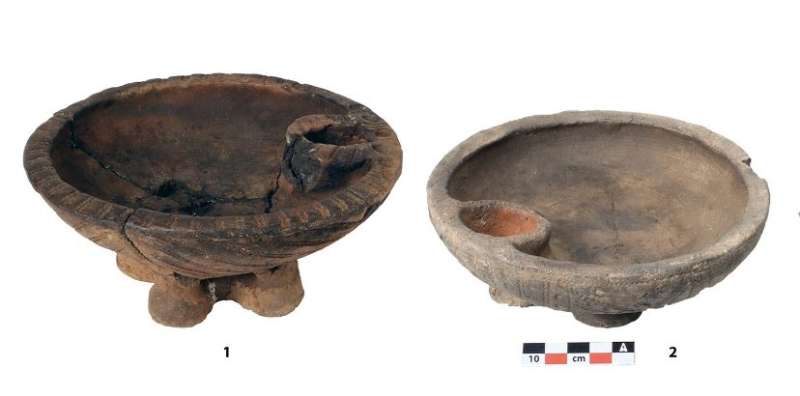Scientists find seeds of domestic plants in the burial sites of ancient nomads

An international team of scientists, including a professor of the Faculty of Soil Science, MSU, has studied burial sites dated back to the Bronze Age at the border between Kalmykia and Stavropol Territory and found traces of domestic barley on the walls of vessels. Local residents did not practice agriculture at that time, so the barley was likely received from people of farming cultures in exchange for other goods. The details of the study were published in Vegetation History and Archaeobotany.
"The article presents the results of analysis of charred food remains on the inner walls of vessels from burial sites located in East Manych and West Manych belonging to the catacomb archaeological culture (2500-2350 BC). We analyzed the phytolith composition and pollen of wild steppe plants and domesticated crops (namely, barley). Direct carbon dating of one of the samples showed that the spikes and stems of barley were used by local steppe communities during burial ceremonies," explained Anatoly Bobrov, a co-author of the work and Professor of the Faculty of Soil Science, MSU.
The scientists explored barrows and catacombs, underground burial constructions, along the East Manych River that flows through the territories of Stavropol Territory and Kalmykia. In the middle of III century BC when the burials took place, this region was occupied by cattle breeding nomads that moved between the foothill of Caucasus and Volga and Don Valleys. The scientists found charred remains of wild plants such as amaranth or gromwell on the floors of barrows, and in the walls of ware and ritual vessels. Local peoples began to cultivate plants not earlier than at the end of the Bronze Age.
The authors of the work studied the remains of plants on the walls of clay vessels in the burial sites of the catacomb culture. Such remains are accumulated over time, and the layer may be several millimeters thick. In these layers, the scientists found fish and animal bones and seeds of plants, as well as small particles consisting of pollen, insects and collagen threads.
The purpose of the study was to determine what wild and domesticated plants were used by local peoples as food or during rituals. To do so, the team used carbon dating and phytolith analysis. Carbon dating helps the scientists determine the age of samples based on their combination of carbon isotopes. Using phytolith analysis, researchers can tell what plants grew in the target area thousands of years ago. Phytoliths are silicon particles that are accumulated in plants and preserved for a longer time than other parts of plants.
Virtually all remains of plants were identified based on pollen or phytoliths. The team found the traces of plants from the sunflower family, as well as sage, ephedra, and other plants typical for the area of their study on the walls of vessels. In two vessels, the remains of domesticated plants related to modern millet, wheat, and barley were discovered. Carbon dating showed that the age of the deposits on the vessels corresponded to that of the people buried in the sites or was slightly higher. The difference may be explained by the fact that the plants were cooked, and processing makes the samples look older.
The results of the study showed that the majority of plants included in the diet of the people belonging to the catacomb culture were not domesticated. The only exception is barley. The residents of the Caucasus region had started to grow it in late VI or early V century BC, and its traces were discovered in the burial sites further to the south. Barley only came to steppes about 2500 BC.
According to the author of the article, there is no evidence that the barley found in the burial sites was grown in the same region. It is likely to be obtained from the peoples of leaving at the foothill of Caucasus in exchange for goods. This version is supported by the results of isotope analysis of human and animal remains. Judging by the correlation between isotopes of strontium, carbon, and nitrogen in their bodies, the nomads of the catacomb culture could travel far in the mountains. This assumption is yet to be proven after more detailed plant dating data is received for different burial sites of Southern Russia and Caucasus.
More information: N. I. Shishlina et al, Plant food subsistence in the human diet of the Bronze Age Caspian and Low Don steppe pastoralists: archaeobotanical, isotope and 14C data, Vegetation History and Archaeobotany (2018). DOI: 10.1007/s00334-018-0676-9
Provided by Lomonosov Moscow State University



















